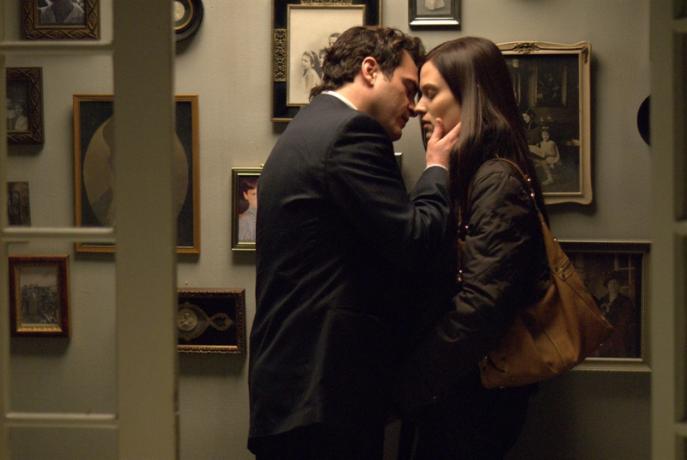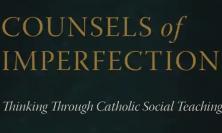Director: James Gray
Starring: Joaquin Phoenix,Gwyneth Paltrow, Vinessa Shaw
UK Release date: 27 March 2009
Certificate: 15 (110 mins)
Two Lovers ends tantalisingly with the promise of a film that it could have been. The two hours prior to the expected finale chart the relationship between a live-at-home loner and the two women with whom he falls – within the film’s parameters – in love. It’s nicely toned but predictable. What was it that the finale suggested?
The choice of the two women available to Leonard (played in shambling fashion by Joaquin Phoenix) is etched in Freudian accuracy: the home-maker versus the ecstasy-taker. Sandra is the daughter of a business partner of Leonard’s father; his parents more than approve, she wants ‘to take care of him’. Michelle is ‘wild’, knows nothing of the family’s Judaism, and needs looking after as she is stung by her ongoing affair with a married man. All three roles are well-acted but the story unravels with predictability – so much so that at the emotional crux between Leonard and Michelle, members of the sparse audience giggled. ‘You’re like a brother to me’ – always horrible to hear (unless the ‘like’ is superfluous), and even more so when the script-writer couldn’t think of anything better for her to say.
We also have one of those irritating filmic conventions of using mental illness as a character tag. Leonard apparently suffers from bipolar disorder: enough to indicate that he is ‘odd’ without it being his fault. There are a couple of scenes wherein he could be thought to be exhibiting either extreme of the illness but the issue isn’t really delved into, leaving us to assume either a delicate restraint on behalf of the director or a laziness on behalf of the character-writer. One leans towards the latter conclusion when Michelle claims to suffer from ADHD (read: she’s wild!).
The choice facing Leonard is therefore clear: the lovely Sandra, eager to make a family with him, look after him, and to be a part of his own family; or the self-absorbed and self-destructive Michelle, who doesn’t really love him (and never tells him that she does). One failure of the film is that we really can’t feel the attraction of Michelle. She isn’t any more attractive physically than Sandra, nor does her wildness manifest itself as excitement barring one club scene. She certainly is no Holly Golightly.
What attracts Leonard to her is the mix of pity and desire. Here we come to what the film is not, and the attention it draws to this same absence in almost all contemporary literature. As suggested, the film is accurate and believable when viewed through the lens of psychology or psychoanalysis. What is absent is a consideration of the issues thrown up by modern relationships in terms of morality. That mixture of pity and desire is common enough to be acknowledged in the practitioners’ codes of doctors and analysts. The feeling of compassion or sympathy for someone is often the first opening to a more fierce attraction. As another Leonard has it –
I would like to try your charity
Until you cry, ‘Now you must try my greed’
(‘Take This Longing’, New Skin for the Old Ceremony, Leonard Cohen)
What is absent from the film – and really, it would have been a shock to find it here – is a moral questioning of the kind of issues that arise from contemporary patterns of relationship, patterns that many Catholics, Christians and people of serious intent find themselves in.
This isn’t just a question of the role of sex, although that is a key part of it. The etymology of the word ‘moral’ leads us to the Latin for the ‘proper behaviour of a person in society’: what is right or wrong in a particular situation. No reader of Thinking Faith needs reminding that our society encourages a particular fluidity of relationships, but what we do need reminding is that once a person has stepped foot outside of the pattern of attraction-relationship-marriage, he or she has not stepped over the boundary line of morality. To characterise as morally feckless those who are touched by modern patterns of relationship is to take them out of discussions in which many would be eager to take part. What is absent from Two Lovers and from a wide scope of contemporary art is a moral depiction of the reality in which many live. Here it is worth remembering what art is for and what it is not for: it is not there to teach us moral truths but rather to depict as accurately and deeply as possible the world around and within us. In this sense Two Lovers fails, but it is important from a Christian perspective to say what it has failed to do, and why this matters.
Nathan Koblintz
![]() Visit this film's official web site
Visit this film's official web site






